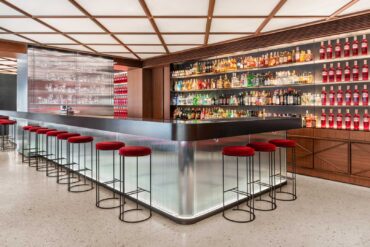For centuries, the wines of the Champagne region carried a certain mystery. They were good — often excellent — yet no one could quite explain why they tasted so alluring on the palate. Then came the introduction of the second fermentation, the process that creates sparkling wine, and the fortune of champagne multiplied, exports soaring sky-high.
From Champagne’s Success to its Triumph
At first, precise figures were unavailable, but in time reliable records emerged, making it possible to count with relative accuracy the number of bottles shipped beyond the region: eight million in 1850, twenty-eight million by 1900, and no less than one hundred million by 1970. From there, the curve steepened dramatically: by 1986 the total had reached two hundred million, by 2010 it was three hundred million, and the growth continues to this day. Yet the trajectory has shifted. People drink less, but better, so while the sheer volume of bottles no longer rises as vertiginously as before, revenues remain firmly in the black. As appreciation turned to success, and success to triumph, the enigma surrounding champagne’s excellence ceased to be a mystery. It can even be celebrated now as UNESCO World Heritage.
Coteaux, Maisons et Caves de Champagne
In 2025 comes the tenth anniversary of the inscription of Coteaux, Maisons et Caves de Champagne on UNESCO’s World Heritage list, granted on July 14, 2015 under the category of cultural landscape — defined officially as sites that “represent the combined works of man and nature.” The hills, the wine houses, and the cellars are inseparable parts of a whole.
But they are not the only essentials: these must be accompanied by a historical, cultural, and technical legacy, all converging to form what UNESCO describes as an “agro-industrial system, one that has shaped not only the landscape but also the local economy and daily life.” It is the product of a long process of development, technical and social innovations, and industrial and commercial transformations that accelerated the shift from artisanal cultivation to mass production of a wine sold worldwide.
Cinema Through a Glass of Champagne
To better grasp this definition, one must step back in time to 1899, when cinema itself was still in its infancy — the official birthdate is December 28, 1895. On the eve of the Paris Exposition Universelle, Eugène Mercier, founder of Champagne Mercier, recognized a unique opportunity to expand the renown of his sparkling wines and capture new markets. He met with Auguste and Louis Lumière, pioneers of cinema, and asked them to create a dedicated film.
They agreed, and the result became the first moving-image advertisement in history. Promotion, too, found its place on paper, with contributions from artists like Alfons Mucha and Toulouse-Lautrec. All this underscores the sense of “agro-industrial system” referenced in UNESCO’s documents: something vast, multifaceted, interconnected, and utterly distinctive, built up over centuries and legible in every detail.
The Secret Behind the Liqueur D’Expédition
So, is everything illuminated at last? Not entirely. A shadow remains, circling around the liqueur d’expédition — the blend added in the final stage of champagne production, once the yeasts that triggered the second fermentation have been removed and each bottle topped up. It isn’t mandatory, but here a few milliliters of liqueur d’expédition may be introduced. It fixes the final dosage of the wine and allows the chef de cave to add a final nuance to the cuvée, a signature that marks the identity of a house. This is why the formula is never proclaimed aloud. It is known to include wine, cane or beet sugar, and sometimes a drop or two of Esprit de Cognac.
But the precise proportions are locked away in each maison’s vaults, safeguarding organoleptic profiles that become both distinctive and recognizable, while still rooted in a shared heritage. The very same heritage, as UNESCO reminds us, that forged a method of production “which spread and was imitated worldwide from the nineteenth century to the present day.” Champagne remains a product of excellence, a universal symbol of festivity, celebration, and reconciliation.
The article first appeared on Coqtail – for fine drinkers. Order your copy here







